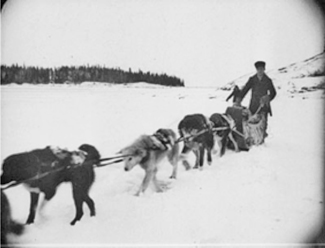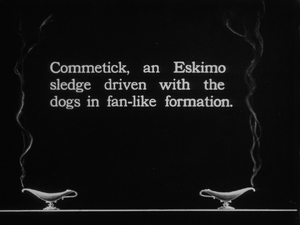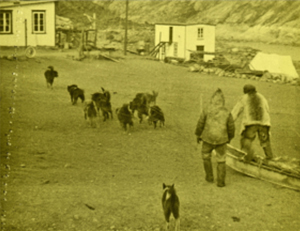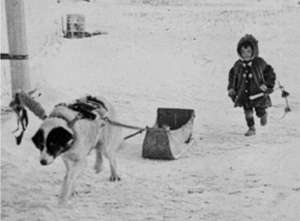From the Editor
Astrup’s Harness
Akunnirmiut Nunavut Quest, Pt. 2
Sleds, Dogs and Nitrate Film
In the News
Fan Mail
CAAT 2012 Baker Lake Animal Wellness Clinic
Book Review: Kamik, an Inuit Puppy Story
Movie Review: Inuk
IMHO: Henson, Pt. 2
Navigating This Site
Index of articles by subject
Index of back issues by volume number
Search The Fan Hitch
Articles to download and print
Ordering Ken MacRury's Thesis
Our comprehensive list of resources
Defining the Inuit Dog
Talk to The Fan Hitch
The Fan Hitch home page
Editor: Sue Hamilton
Webmaster: Mark Hamilton
The Fan Hitch, Journal
of the Inuit Sled Dog, is published four
times a year. It is available at no cost
online at: https://thefanhitch.org.
The Fan Hitch welcomes your letters, stories, comments and suggestions. The editorial staff reserves the right to edit submissions used for publication.
Contents of The Fan Hitch are protected by international copyright laws. No photo, drawing or text may be reproduced in any form without written consent. Webmasters please note: written consent is necessary before linking this site to yours! Please forward requests to Sue Hamilton, 55 Town Line Rd., Harwinton, Connecticut 06791, USA or mail@thefanhitch.org.
This site is dedicated to the Inuit Dog as well as related Inuit culture and traditions. It is also home to The Fan Hitch, Journal of the Inuit Sled Dog.
The Fan Hitch welcomes your letters, stories, comments and suggestions. The editorial staff reserves the right to edit submissions used for publication.
Contents of The Fan Hitch are protected by international copyright laws. No photo, drawing or text may be reproduced in any form without written consent. Webmasters please note: written consent is necessary before linking this site to yours! Please forward requests to Sue Hamilton, 55 Town Line Rd., Harwinton, Connecticut 06791, USA or mail@thefanhitch.org.
This site is dedicated to the Inuit Dog as well as related Inuit culture and traditions. It is also home to The Fan Hitch, Journal of the Inuit Sled Dog.

HBC film crew travelling by dogsled in northern Alberta; 1919.
Photo courtesy: Hudson’s Bay Company Archives
Sleds, Dogs and Nitrate Film
by Kevin Nikkel
Five Door Films
Winnipeg, Manitoba, Canada
I must admit, I didn’t know much about sled dogs when I first turned my attention to the history of the Hudson’s Bay Company to create a documentary on this storied corporation and a film they created in 1920 for their 250th anniversary. Now, as I find myself studying and learning about the early days of travel in the far fur country, I am captivated by stories of the winter treks of the likes of James Tyrrell, Casper Whitney and John Rae. Related to this, I have been working with archival footage that contains spectacular scenes of these same sorts of arctic journeys.
In 1919, the Hudson’s Bay Company set out to create a feature film that told the story of their work in Canada. They sent two cameramen from coast to coast to coast to shoot what would become the Romance of the Far Fur Country. The film was to be a portrait of the fur trade, showing life from the trapper to the factor to the fur warehouses and the life along the way. There are many interesting aspects to this journey, the representation of sleds and dogs being one of them.
The film reels have recently returned from the British Film Institute in London to the Hudson’s Bay Company Archives in Winnipeg. The original reels of nitrate film were digitized to HD video giving it a new lease on life. In addition to working on the re-release of the silent feature film, I am producing a documentary that tells the story of the film’s return to Canada after such a long absence.
The filmmakers set out on their journey from Montreal traveling on the steam ship Nascopie up the St. Lawrence River to follow the coast of Labrador. They arrived at Baffin Island in July to film in the Hamlet of Lake Harbour (now called Kimmirut). Due to the summer season, there wasn’t much opportunity to film sled dogs in action. They did film the feeding of packs of dogs, and seemed to have convinced a few Inuit locals to harness their dogs in their fan hitch formation to demonstrate the use of their traditional sleds albeit without snow on the ground.

Original title card from Romance of the Far Fur Country
describing scene below.

Lake Harbour (Kimmirut), on Baffin Island; 1919.
Photo courtesy of the Hudson’s Bay Company Archives
From Lake Harbour they traveled south into Hudson’s Bay and James Bay, taking canoes up the Abitibi River from Moose Factory. They trained west and would eventually begin their trek north from Athabasca Landing, Alberta. Their destination was Fort Chipewyan on the northern border of Alberta. They had set out by scow, but because of delays, and an early cold snap, the crew was forced to abandon water travel for horse drawn sleigh, then by dogsled at House River as they pushed north.
In the archival footage we see the crew using several different sleds. One is a cariole, another is identified by Thomas O’Kelly as his Shackleton sledge, because it had been given to him by Sir Ernest Shackleton for the journey. The HBC filmmakers would film trapping, ice fishing, sled races, and every day life in these remote northern outposts.
In early February 2013 I am making another trip up to Fort McMurray and Fort Chipewyan to continue filming my documentary On the Trail of the Far Fur Country. I have been invited to experience winter on a trap line and to film a sled dog outing. I can’t wait. You can follow progress of the film on our web site.
